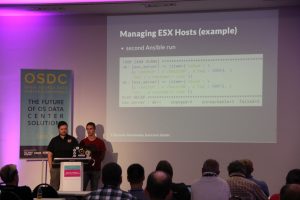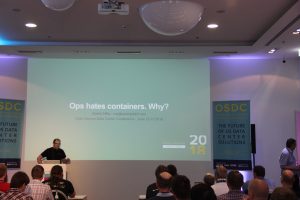![]()
Nachdem unsere Auszubildenden eine ganze Blogserie haben, in der sie immer mal wieder aus dem Nähkästchen plaudern, dachte ich mir ich dreh den Spieß mal rum. In den nächsten Zeilen kann der interessierte Leser also meine persönliche Sicht auf die Frage warum wir ausbilden, was mein Ziel für die Auszubildenden ist und wie ich versuche dies über die drei Jahre zu erreichen und natürlich noch kurz worauf ich deswegen bei der Auswahl der Auszubildenden achte.
Warum bilden wir aus?
Es ist jetzt etwa drei Jahre her, dass Bernd im Jahresgespräch die Altersstruktur der Firma thematisiert hat und dass wir eine junge Firma sind und dies auch bleiben wollen. Dadurch entstand die Rechnung wie viele Auszubildenden in welchem Durchschnittsalter wir brauchen um den Altersdurchschnitt zu halten in der Annahme auch allen alternden Mitarbeitern weiterhin eine Perspektive zu bieten. Als zweiter Faktor kam hinzu, dass es sich besonders in Professional Services (unserer Consulting- und Support-Abteilung) schwierig gestaltet mit dem Auftragswachstum personell schrittzuhalten, da hier Leute mit einem breiten Basiswissen, einigem Spezialwissen, Soft-Skills um sie auf Kunden loszulassen, Reisebereitschaft und um ehrlich zu sein ohne utopische Gehaltsvorstellungen brauchen. Diese beiden Faktoren haben also die Diskussion angefacht, ob wir auch in Professional Services ausbilden können. Nachdem einige mir wichtige Rahmenbedingungen wie ein Abteilungsdurchlauf und ausreichend Zeit zur Betreuung und Schulung der Auszubildenden festgelegt waren, hat also Professional Services sich mit dem Ausbildungsjahr 2017 den anderen Abteilungen angeschlossen, die schon wesentlich länger ausbilden.
Was ist das Ziel?
Mein erklärtes Ziel ist es den Auszubildenden nach drei Jahren eine fundierte Entscheidung für den weiteren Berufsweg zu ermöglichen und die Grundlagen vermittelt zu haben, für egal welchen Weg sie sich entscheiden. Die Optionen, die ihnen offen stehen, sind in meinen Augen Junior Consultant in Professional Services, eine andere Tätigkeit bei NETWAYS ohne Reisen, ein Wechsel zu einer anderen Firma oder gar ein Wechsel zu einem anderen Tätigkeitsfeld. Wobei mein erklärtes Wunschziel natürlich der Junior Consultant wäre!
Wie will ich das Ziel erreichen?
Als wichtigstes sehe ich im ersten Lehrjahr IT-Grundlagen und Soft-Skills, die bereits von Anfang an vermittelt werden sollen. Um die IT-Grundlagen zu vermitteln setzen wir auf eine Mischung aus Schulungen durch die erfahrenen Mitarbeiter, Projekte in denen die Auszubildenden selbstständig Themen erarbeiten und den praktischen Einsatz bei Managed Services.
Bei den Schulungen starten wir direkt in der ersten vollen Woche mit Linux-Grundlagen, denen später im ersten Lehrjahr SQL-Grundlagen, Netzwerkgrundlagen, DNS & DHCP folgt und im weiteren Ausbildungsverlauf sind dann noch geplant Linux-Packaging, Virtualisierung und Systemsicherheit zu vermitteln. Als erstes Projekt haben die bisherigen Jahrgänge immer einen LAMP-Stack gemeinsam aufsetzen sollen, bei dem jeder zwar eine Teilaufgabe umsetzen, dokumentieren und präsentieren muss, aber am Ende auch ein gemeinsames Ergebnis erreicht werden muss. Weitere Projekte kommen dann meist aus aktuellen Anforderungen oder Teststellungen und handeln sich nicht um so simple Tätigkeiten wie Benutzer anlegen. So haben die Auszubildenden beispielsweise Portainer getestet, die Hardwarewartung für einen Kollegen übernommen und anschließend getestet. Bei Managed Services werden die Auszubildenden dann mit Aufgabenstellungen aus der Praxis konfrontiert und dürfen sich beispielsweise mit der API unserer CMDB herumschlagen.
Zu den wichtigsten Soft-Skills zählt für mich Selbstmanagement, also lernen die Auszubildenden mit der selben Zeitregelung umzugehen wie alle anderen auch, die geleisteten Arbeitszeiten erfassen, ihre Tickets zu pflegen und was sonst noch dazugehört damit Alles rund läuft. Ebenfalls wichtig ist natürlich Kommunikation und Auftreten, adressatengerechte Präsentation und Dokumentation. Hier hilft sicherlich auch der Abteilungsdurchlauf, bei dem die Auszubildenden auch mal den Telefondienst übernehmen, Grundlagen der Buchhaltung vermittelt bekommen oder helfen eine Schulung zu organisieren und betreuen.
Im zweiten und dritten Lehrjahr bauen wir dann diese Grundlagen aus, indem zusätzlich zu den internen Schulungen unsere offiziellen Schulungen besucht und interne Projekte anspruchsvoller werden, mehr Vorgaben an Dokumentation und Präsentation zu beachten sind und zusätzlich kommen Fachgespräche nach der Präsentation hinzu. Außerdem unterstützt immer ein Auszubildender die Kollegen im Support und leistet Betriebsunterstützung für Kunden. Der Abteilungsdurchlauf setzt sich fort und Sales erhält technische Unterstützung bei Webinaren und Pre-Sales-Terminen und auch unsere Systemintegratoren lernen unsere Entwickler und das Entwickeln in Open-Source-Projekten kennen. Mir ist besonders wichtig, dass die Auszubildenden den Kundenkontakt lernen, indem sie erfahrene Consultants begleiten und auch dort eigene Aufgaben übernehmen oder in Schulungen die Rolle des Co-Trainers und einzelne Themenblöcke übernehmen.
Als Belohnung für gute Leistungen kommen dann noch Konferenzteilnahmen oder sogar das komplett selbstständige Abwickeln eines Kundenprojekts, wobei dies natürlich immer nur Remote durchgeführt werden kann, damit ein erfahrener Kollegen wie bei den internen Projekten unterstützen kann.
Um all dies zu planen, Projekte zu suchen, die Schwächen und Stärken der Auszubildenden individuell berücksichtigen und die Auszubildenden zu betreuen, wird natürlich entsprechend viel Zeit benötigt, welche ich und unterstützende Kollegen dankenswerterweise bekommen haben. Damit dies alles so funktioniert, ist Professional Services natürlich nicht nur auf die Mitarbeit aller im Team sondern auch auf die Unterstützung der anderen Abteilungen und das Verständnis der Kunden angewiesen. Hierfür an dieser Stelle ein herzliches Dankeschön.
Auswahl der Auszubildenden
Wer jetzt denkt um das Ziel zu erreichen erwarten wir von unseren Bewerber schon bestimmtes Vorwissen, wird überrascht sein, dass ich sowas zwar als Bonus ansehe, aber es mir auf ganz andere Dinge ankommt. Den ersten Kontakt mit einem Bewerber habe ich, wenn mir Bewerbungsunterlagen weitergeleitet werden und ich um meine Meinung gebeten werde. Als erstes schaue ich mir daher das Anschreiben an um die Motivation für die Berufswahl und den bisherigen Werdegang zu erkennen. Schlecht ist wenn diese nicht nachzuvollziehen ist und sich der Bewerber auch nicht die Mühe gemacht hat Rechtschreibkorrektur oder Korrekturleser zu bemühen. Ein Lebenslauf sollte dann einfach nur schlüssig sein und Zeugnisnoten sind interessant, aber viel interessanter ist das Bild, das sich aus den Zeugnisbemerkungen ergibt.
Wer es schafft damit zu überzeugen, hat die erste Hürde genommen und bekommt eine Einladung zum Vorstellungsgespräch. Hier muss dann einfach das Auftreten überzeugen, ein technisches Verständnis und Interesse sowie natürlich Motivation auszumachen sein. Klingt eigentlich simpel und wer nicht selbst an so einem Bewerbungsprozess beteiligt ist, wird es kaum glauben wie viele an einfachen Dingen wie Pünktlichkeit scheitern oder dass die Begründung “Ich schraube gerne an Rechnern” nicht die beste Motivation ist. Ein Bewerber, der zum zweiten Lehrjahr nicht volljährig ist, muss hierbei etwas mehr überzeugen, da der organisatorische Aufwand bei Reisen welche im Consulting anfallen wesentlich höher ist. Aber ein Ausschlusskriterium wäre es genauso wenig wie ein höheres Alter bei beispielsweise einem Studienabbrecher oder zweiter Ausbildung.
Schlusswort
Ich hoffe jeder Leser hat ein gewisses Verständnis für und Einblick in die Ausbildung bei NETWAYS gewonnen. Der ein oder andere Kunde ist nun vielleicht nicht mehr überrascht, wenn er gefragt wird ob der Consultant von einem Auszubildenden begleitet werden kann. Andere Ausbildungsbetriebe dürfen sich gerne Anregungen holen und ich bin generell auch immer an einem Erfahrungsaustausch interessiert. Und vor allem freu ich mich, wenn nun jemand denkt, dass wir der richtige Ausbildungsbetrieb für ihn sein könnten und sich bewerben möchte.

 Quite often I get asked how someone can get involved with an Open Source project without or at least minimal development skills. I have some experience in this topic as I am pretty involved with some projects, especially
Quite often I get asked how someone can get involved with an Open Source project without or at least minimal development skills. I have some experience in this topic as I am pretty involved with some projects, especially 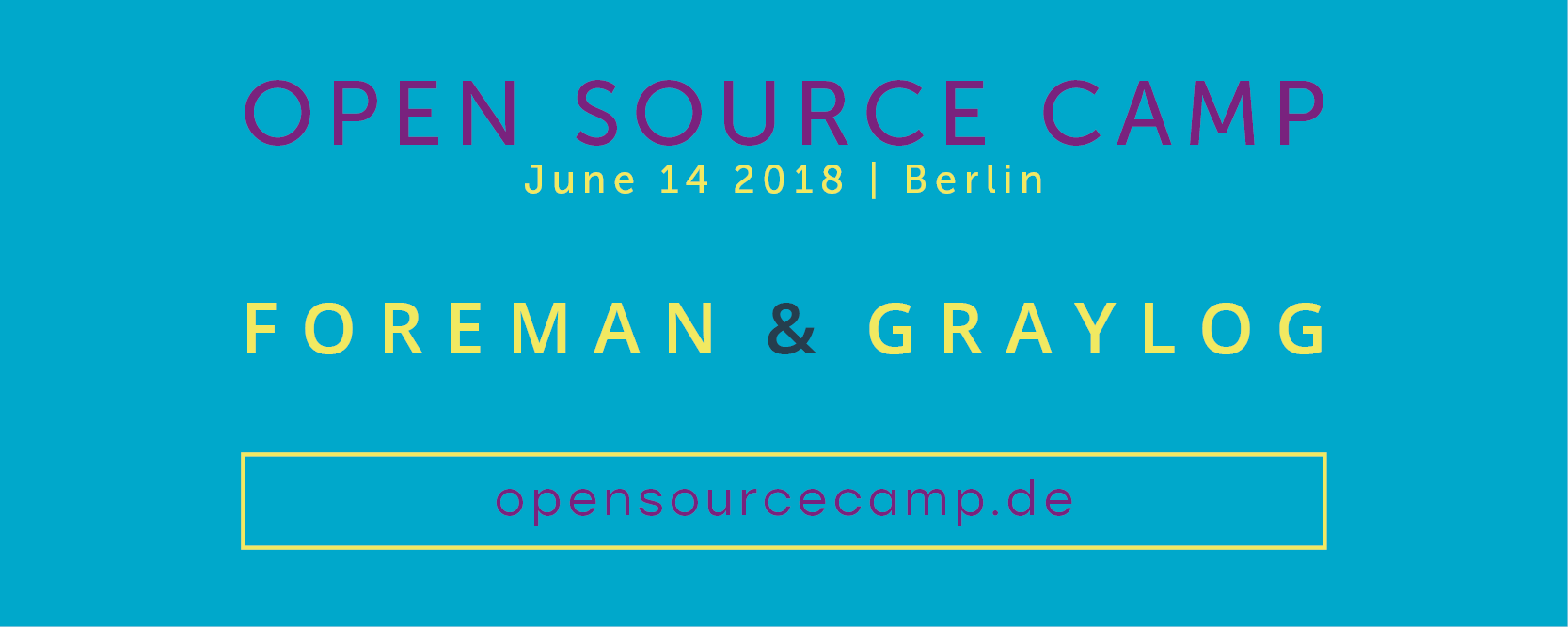 Right after
Right after 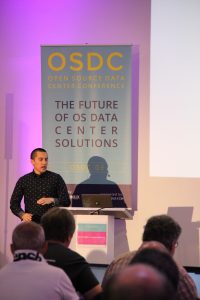 First talk was
First talk was 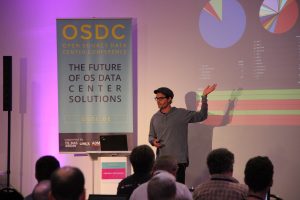 Second was “Hardware-level data-center monitoring with Prometheus” presented by Conrad Hoffmann who gave us some look inside of the datacenter of Soundcloud and their monitoring infrastructure before
Second was “Hardware-level data-center monitoring with Prometheus” presented by Conrad Hoffmann who gave us some look inside of the datacenter of Soundcloud and their monitoring infrastructure before 